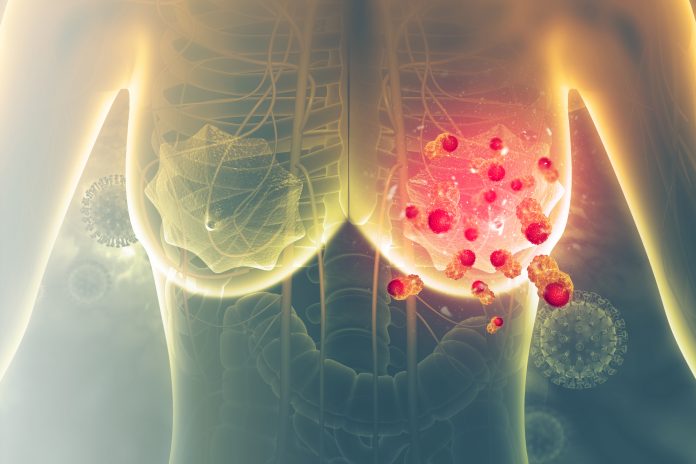
Researchers at the Centre for Genomic Regulation and Vall d’Hebron Institute of Oncology, both in Barcelona, Spain, indicate that simultaneously inhibiting two specific proteins could slow the growth of triple-negative breast cancer (TNBC). The study, which appears in the journal EMBO Molecular Medicine, could have siginficant implications for this hard to treat cancer.
Sara Sdelci, PhD, and Sandra Peiró, PhD, at the Centre for Genomic Regulation, led the team, which included researchers in the Upper GI Cancer Translational Research Group at the Vall d’Hebron Institute of Oncology, and who focused on LOXL2 and BRD4—two proteins that influence TNBC cells’ growth, as a way of more effectively treating the disease. TNBC, which accounts for about 15% of breast cancer cases, is highly resistant to existing treatments because its cells lack the receptors that breast cancer drugs target. TNBC patients often have poor prognosis as a result.
Based on earlier research that identified LOXL2 enzyme’s role as a growth driver in TNBC, the scientists were assessing its suitability as a biomarker for predicting treatment outcomes for patients. Their analysis showed that LOXL2 expression could only be used to predict the outcomes of drugs that target BRD4 protein activity.
The next set of experiments investigated whether LOXL2 and BRD4 might work together to help TNBC cells grow. What they found was that LOXL2 interacts with a version of BRD4 in the nucleus, an interaction that changes how both genes are expressed and ultimately supports TNBC’s growth. Inhibiting both proteins at the same time disrupted their interaction and slowed growth in TNBC cell cultures and three separate mouse models as well.
It’s an important finding with possible treatment implications. “It is exciting because a double strike strategy that targets both proteins could be combined with other treatments and transform triple-negative breast cancer from a disease with a very poor prognosis into one that is manageable,” according to Laura Pascual Reguant, PhD, first author of the study and postdoctoral researcher at the Centre for Genomic Regulation.
One such treatment involves an experimental class of drugs known as BET inhibitors, which work by compromising the BRD4 function. These drugs are a promising treatment option for TNBC but have been unsuccessful in clinical trials because the cancer cells eventually become resistant. Targeting both proteins at the same time could be the key to successfully using them in practice.
The next challenge is figuring out how to target both proteins at the same time safely and effectively. One possible strategy is combining existing inhibitors. Different versions of BRD4 are already being targeted by BET inhibitors in 30 clinical trials including five TNBC trials. There are inhibitors for LOXL2 but their safety and efficacy in treating cancer has not been evaluated. Also, no one has tested the outcomes of combining both inhibitors. Clearly, “more work needs to be done before our findings will benefit patients, but any progress in understanding the mechanisms of this highly aggressive disease is good news,” Sdelci noted.













